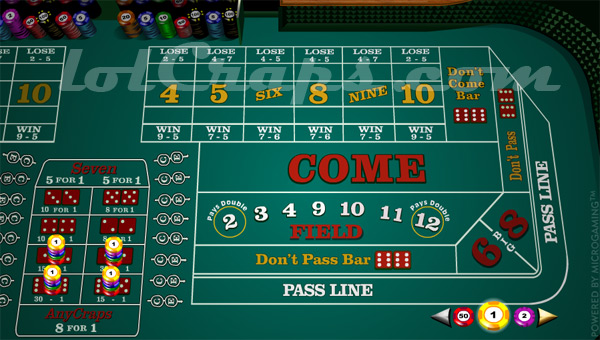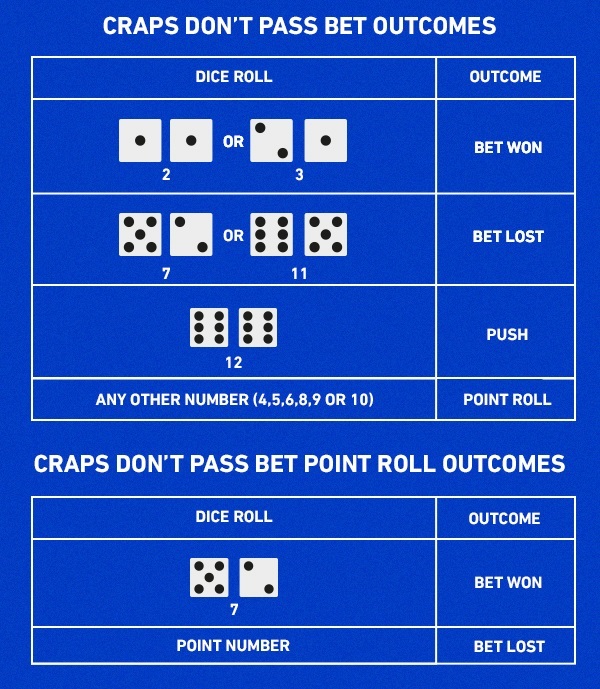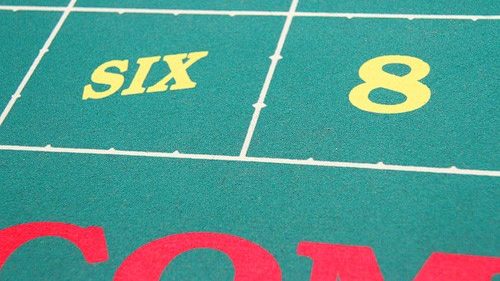Lay Bet Strategy Craps
Lay Bets are the opposite of the Buy Bets, except Lay Bets are wagering against the shooter. Like a buy bet, a Lay Bet allows a gambler to be paid true odds. To receive those nice votes, the craps player pays a 5% commission on their winning bets. Lay bets are made on one of the “point” numbers: 4,5,6,8,9, and 10.
The lay bet works almost the same way, except it is the opposite. This time you wager on the point number and that the shooter will roll a seven before the point. Again, players are paid out the true odds with no house edge, along with the 5% vig commission. The best bet in craps is the Pass/Don't Pass and the Come/Don't Come bets. The reason why they are the best craps bets is that they have the lowest house edge at 1.41%. As a result, these bets should feature strongly in your craps strategy.
- The Lay Bet in Craps T he Lay bet is basically opposite of the Buy bet. You bet that a 7 will appear before one of the point numbers (i.e., 4, 5, 6, 8, 9, or 10). For example, suppose you notice a temporary trend where the number 5 hasn’t appeared in the last 30 minutes.
- 5/9 Betting Strategy. Craps is a dice game in which players place wagers on the outcome of the roll, or a series of rolls, of a pair of dice. Players may wager money against each other (street craps, also known as shooting dice or rolling dice) or a bank (casino craps, also known as table craps).

That means there are six different lay bets: The Lay 4, Lay 5, Lay 6, Lay 8, Lay 9, and Lay 10 wagers. As an example, to win the Lay 8 bet, the shooter needs to roll a 7 before they roll an 8
In an earlier article I talked about the Pass and Don’t Pass bets as well as the Come and Don’t Come bets PLUS the all-important Free Odds bet. In all of these bets the actual “point” to be decided is determined by a roll of the dice. On the Come Out roll, for example, if the shooter tosses a Four then the Four becomes the Point. She must repeat the Four before throwing a Seven in order to win if shooting from the Pass side. Players on the Don’t Pass are hoping the Seven rolls before the Four.
Let’s assume you are a Pass Line bettor and the point has been established as the Four. As a “right” side player your favorite numbers are probably the six and eight. Why? Because there are more “combinations” on the dice that add up to six or eight than any other point numbers. There are five ways each to roll the six or eight versus six ways to roll the seven. When wagered as a pair the six and eight give you ten ways to win versus six ways to lose. Since these numbers roll more often – you should win more often. Of course, those numbers are deceiving because you’re only going to win even money on your Pass Line bet and 6 – 5 on the Free Odds bet. However, the casino will let you choose the number you bet for a small “fee.” It’s called a Place Bet. You simply give the dealer your chips and tell him which number you’d like to place a bet on. They set up the bet and give you any change due. Then, if the bet wins, they extract that “fee” from the payoff. Instead of paying you true odds of 6 to 5 they will pay you 7 – 6. So on a $5 game you’d Place the Six and Eight for $6 each. If either of them roll you’ll be paid $7.
There are literally thousands of betting strategies that have been developed through the years to attempt to gain an edge over craps through various combinations of bets. None of them work over the long run. The math of the game is incontrovertible. However, many such strategies do work and work quite well over the short run – giving rise to hope in many players of an easy life living off the casino’s money. But craps is a tough way to make an easy living.
Here are the payoffs on the various Place Bets:

Six and eight – 7 to 6
Five and nine – 7 to 5
Four and ten – 9 to 5
In a $10 game – the game you are most likely to encounter in Las Vegas and on cruise ships – you can bet $10 each on the four, five, nine and ten. The six and eight are bet for $12 each in order to get a correct payoff.
There are several common “combination” bets you’ll hear players place at the table. These bets are made by “action” players who want to get more money on the table quickly in hopes of turning a big profit from a hot hand. Here are some of the more common wagers:
$44 Inside – $10 each on the five and nine plus $12 each on the six and eight
$40 Outside – $10 each on the four, five, nine and ten.
$44 Even – $10 each on the four and ten plus $12 each on the six and eight
$64 Across – $10 each on the Outside numbers plus $12 each on the six and eight – covering all of the numbers.
Then there’s my favorite. Toss in a $100 chip and ask for $96 across plus $1 each on the hardways.
Of course, you’ll hear these same wagers made in different denominations – all the way up to table maximum.
$110 Inside
$660 Even Numbers
$9600 Across
As long as the bet is within the tables stated limits – the house will book it.

The house edge on Place Bets on the Four and Ten are so high that it’s recommended that you “Buy” those numbers if the bet exceeds $20. At that level the player pays a 5% or $1 commission for the right to be paid “true” odds of 2 – 1. In some casinos the $1 commission is paid up front. In others it is only collected when the bet wins. The latter is more advantageous to the player. It’s also worth noting that casinos typically allow players to Buy the Four and Ten for $25 and still pay only $1 commission as a courtesy to green chip bettors. Others extend the “breakage” out to $30. If you find a casino that extends the breakage to $30 and collects the commission only on the win you’ve found a real bargain. This brings the house edge down on a par with the Pass Line bet.
Place Bets and Buy Bets are the meat and potatoes of serious craps players. Over the long run they are not quite as strong as Pass and Come bets with odds, but played correctly they do offer many advantages over Pass and Come Betting. Here’s a quick look at some of those advantages.

- The Player chooses which number he bets on rather than relying on random chance.
- The number the player bets on only has to hit once for him to get paid. Pass and Come bets have to roll twice.
- Place bets are always under player control and can be taken down at any time. Pass and Come bets are contract bets and must remain up and working.
- The player can also regress his bets down as low as table minimum at any time if he wants to take additional profit off the table. Place and Come bettors can only take down their odds – not the underlying bet.
Place bets are the meat and potato bets for many players, but not every hand tossed at the table has a happen ending. In fact, every hand tossed at craps ends with a seven out. For that reason, a few players prefer to play the “Dark Side.” For them the “meat and potatoes bets are Lay Bets.
Simply put, the Lay Bet is exactly the opposite of the Place and Buy bets we talked about last week. However, in the United States it is rare to see a Place to Lose bet on the Layout. Instead, the casinos simply accept Lay Bets on all of the numbers.
You may Lay a bet against 4, 5, 6, 8, 9 or 10 at any time, and Lay bets are often employed as “hedge” bets some betting strategies. Lay bets function about the same as a Don’t Come bet. When laying against a number, you are wagering that the seven will roll before that number. The casino charges a 5% commission based on what you could win. Correctly sized Lay Bets are:
$41 No Four or No Ten – Pays $20
$31 No Five or No Nine – Pays $20
$25 No Six or No Eight – Pays $20
Lay Bets always work unless you take them down and are denoted by a Lay button or “lammer.”
One of the most popular uses of Lay bets is as a hedge. Players betting the Don’t Pass at the $20 – $25 level often fear getting “knocked off” by a Come Out Seven or Eleven, and get a partial hedge by Laying the Four or Ten for $41. If a Seven shows on the Come Out the player loses his Pass Line bet, but wins his Lay Bet – more or less offsetting his loss. Of course, he’s not hedged against the eleven so hedge players often end up betting a $1 “YO” to cover the eleven, then $2 on the Hard Four or Ten to partially hedge their Hedge Bet. Bottom line? You end up hedging your hedges – which is why hedge betting is generally not a good idea. Simply bet within your bankroll and don’t worry about hedging.
Best Bets In Craps And Why

Lay Bet Strategy Craps Strategy
Remember, despite all of the complications we’ve added, at the end of the day craps is still a coin flip game. On every toss of the dice you win, lose, or there’s no decision (that affects you).